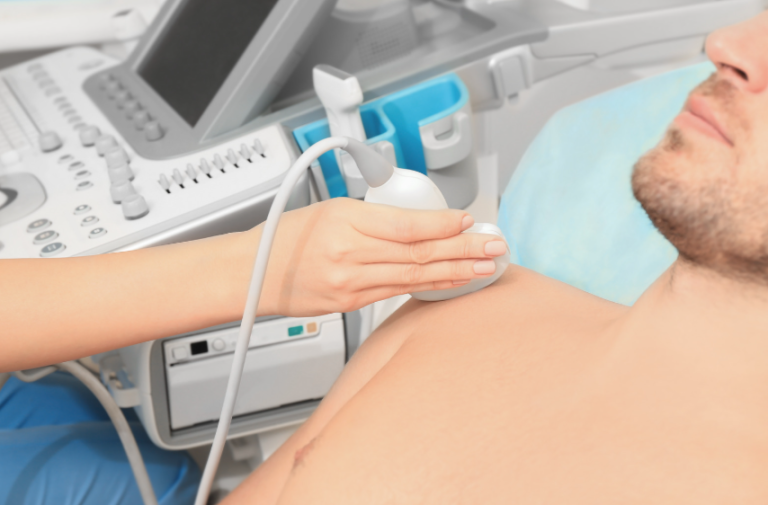Musculoskeletal Ultrasound Imaging has revolutionized the way healthcare professionals diagnose and treat musculoskeletal disorders. Traditionally, musculoskeletal conditions were diagnosed using techniques such as X-ray, MRI, or CT scans. However, advancements in ultrasound technology have made Musculoskeletal Ultrasound Imaging a prominent tool in clinical practice. This non-invasive, real-time diagnostic method offers numerous advantages, such as portability, cost-effectiveness, and high-resolution imaging. As we look towards the future, it’s clear that the ongoing improvements in Musculoskeletal Ultrasound Imaging will further enhance its role in patient care and treatment outcomes.
The Current State of Musculoskeletal Imaging
While Musculoskeletal Ultrasound Imaging is gaining popularity, traditional imaging modalities like X-ray, MRI, and CT scans have long been the go-to solutions for musculoskeletal diagnoses. However, these imaging techniques have certain limitations. X-rays are effective for detecting fractures but lack the ability to assess soft tissues in detail. MRI scans provide more in-depth information but come with higher costs and limited accessibility. CT scans are beneficial for complex musculoskeletal conditions but involve radiation exposure. Musculoskeletal Ultrasound Imaging addresses these challenges by offering a non-invasive, radiation-free alternative for diagnosing a wide range of conditions, including tendonitis, ligament tears, and muscle strains.
Key Advancements in Ultrasound Technology
Enhanced Resolution and Image Quality
Recent advancements in Musculoskeletal Ultrasound Imaging have significantly improved image resolution and quality. With the development of more advanced transducers and image-processing software, ultrasound machines now produce clearer, more detailed images. These improvements have enabled healthcare professionals to detect even the smallest abnormalities in muscles, tendons, and joints. Enhanced resolution is particularly beneficial in diagnosing early-stage musculoskeletal disorders, which may otherwise go undetected with traditional imaging methods.
Portable and Point-of-Care Devices
One of the most exciting developments in Musculoskeletal Ultrasound Imaging is the advent of portable ultrasound devices. These handheld machines are lightweight, easy to use, and provide real-time imaging at the point of care. This advancement has made Musculoskeletal Ultrasound Imaging accessible to healthcare providers in various settings, from sports medicine clinics to emergency rooms. The portability of these devices allows for quick diagnosis and treatment of musculoskeletal injuries, improving patient outcomes and reducing waiting times.
AI Integration in Ultrasound Imaging
Artificial intelligence (AI) is playing an increasingly vital role in Musculoskeletal Ultrasound Imaging. AI algorithms can assist in the interpretation of ultrasound images, helping to identify abnormalities more quickly and accurately. By analyzing vast amounts of data, AI can provide predictive insights into musculoskeletal conditions, such as the likelihood of a tendon rupture or joint inflammation. The integration of AI in Musculoskeletal Ultrasound Imaging not only enhances diagnostic accuracy but also reduces human error, making ultrasound an even more reliable tool in musculoskeletal healthcare.
3D and 4D Ultrasound Imaging
Another groundbreaking advancement in Musculoskeletal Ultrasound Imaging is the development of 3D and 4D ultrasound technology. These techniques provide dynamic, three-dimensional views of the musculoskeletal system, allowing clinicians to assess joint movement, soft tissue structures, and complex injuries more comprehensively. 3D and 4D imaging can be particularly valuable in cases of joint instability or during surgical planning, providing real-time insights into how tissues interact during motion.
Benefits of Advanced Ultrasound Technology for Musculoskeletal Imaging
The advancements in Musculoskeletal Ultrasound Imaging bring several key benefits to both patients and healthcare providers. Unlike traditional imaging techniques that often require patients to remain still for extended periods, ultrasound allows for dynamic imaging, capturing real-time movement of muscles, tendons, and joints. This capability is particularly useful for diagnosing conditions like ligament sprains and muscle tears. Additionally, Musculoskeletal Ultrasound Imaging is a non-invasive and radiation-free option, making it a safer choice for frequent use. Compared to MRI and CT scans, ultrasound is more cost-effective, offering a budget-friendly alternative without sacrificing diagnostic accuracy. With the advent of portable devices, Musculoskeletal Ultrasound Imaging has also become more accessible, providing healthcare professionals in rural or underserved areas with the tools they need to diagnose musculoskeletal conditions efficiently.
Applications in Clinical Practice
Sports Medicine
Musculoskeletal Ultrasound Imaging is a game-changer in sports medicine, where accurate and timely diagnoses are crucial. Athletes often experience injuries to muscles, ligaments, and tendons, and ultrasound provides a real-time view of these structures. Ultrasound imaging allows for quick assessment of sprains, strains, and tears, enabling sports medicine specialists to create effective treatment plans. The portability of ultrasound devices also makes them ideal for on-site assessments during games or training sessions.
Rheumatology
In rheumatology, Musculoskeletal Ultrasound Imaging is invaluable for detecting early signs of arthritis and monitoring disease progression. By visualizing joint inflammation, fluid accumulation, and soft tissue changes, ultrasound helps rheumatologists evaluate the severity of conditions like rheumatoid arthritis and gout. Musculoskeletal Ultrasound Imaging also plays a critical role in guiding injections for patients suffering from joint pain or inflammation, offering precise targeting for more effective treatment.
Orthopaedics
Orthopaedic specialists are increasingly relying on Musculoskeletal Ultrasound Imaging to diagnose and manage musculoskeletal disorders. Ultrasound allows for detailed examination of fractures, ligament sprains, and post-surgical healing, which aids in planning treatment or rehabilitation. Its real-time capabilities also allow orthopaedic surgeons to assess joint function and soft tissue integrity during procedures like arthroscopy.
Paediatrics
For paediatric patients, Musculoskeletal Ultrasound Imaging is a valuable tool in diagnosing developmental disorders, joint deformities, and congenital musculoskeletal conditions. Ultrasound’s non-invasive nature and lack of radiation make it an ideal imaging technique for children. Paediatric musculoskeletal disorders can be challenging to diagnose, but ultrasound’s high resolution and dynamic imaging capabilities make it easier to detect abnormalities early, ensuring timely intervention and better outcomes for young patients.
Challenges and Limitations
Despite its many advantages, Musculoskeletal Ultrasound Imaging does have some challenges and limitations. One of the primary concerns is the operator dependency; the quality of the ultrasound image can vary depending on the skill and experience of the technician. Additionally, while ultrasound provides excellent imaging of superficial structures, it may not be as effective for assessing deeper tissues compared to MRI. The variability in image quality across different ultrasound devices and manufacturers also remains a challenge for standardization. Nevertheless, as technology continues to evolve, many of these limitations are expected to be addressed through further advancements in ultrasound equipment and training.
Future Trends and Innovations
The future of Musculoskeletal Ultrasound Imaging looks incredibly promising, with several exciting trends on the horizon. One of the most anticipated innovations is the increased integration of AI, which will further enhance diagnostic accuracy and efficiency. AI could enable ultrasound machines to automatically detect and categorize musculoskeletal conditions, providing clinicians with faster results. Additionally, wearable ultrasound devices may soon be available, allowing for continuous monitoring of musculoskeletal health. These advancements could play a significant role in managing chronic conditions and preventing injuries before they occur. The future of Musculoskeletal Ultrasound Imaging is set to expand beyond diagnostics, with new applications in regenerative medicine and targeted therapies.
Takeaway
Musculoskeletal Ultrasound Imaging is poised for significant growth and innovation in the coming years. With advancements in image quality, portability, AI integration, and 3D/4D imaging, ultrasound technology is becoming a crucial tool for diagnosing and treating musculoskeletal disorders. The benefits of Musculoskeletal Ultrasound Imaging—such as real-time assessments, non-invasiveness, and cost-effectiveness—make it a preferred choice for healthcare providers worldwide. As the technology continues to evolve, Musculoskeletal Ultrasound Imaging will undoubtedly play an even more prominent role in the future of musculoskeletal healthcare, improving patient outcomes and streamlining diagnostic processes.
FAQs
What is Musculoskeletal Ultrasound Imaging?
Musculoskeletal Ultrasound Imaging is a diagnostic tool that uses high-frequency sound waves to create images of muscles, tendons, ligaments, and joints. It is used to detect injuries, inflammation, and other musculoskeletal conditions.
How does AI enhance Musculoskeletal Ultrasound Imaging?
AI algorithms can analyze ultrasound images to identify abnormalities more accurately and quickly. AI can assist clinicians in diagnosing conditions, reducing human error and improving patient care.
What are the benefits of using Musculoskeletal Ultrasound Imaging over MRI?
Musculoskeletal Ultrasound Imaging is a non-invasive, radiation-free, and cost-effective alternative to MRI. It offers real-time imaging and is portable, making it more accessible and convenient for both patients and healthcare providers.
What conditions can Musculoskeletal Ultrasound Imaging detect?
Musculoskeletal Ultrasound Imaging is effective for diagnosing a wide range of conditions, including tendonitis, ligament tears, muscle strains, joint inflammation, and fractures. It is also useful for monitoring disease progression in conditions like arthritis.
4o mini






